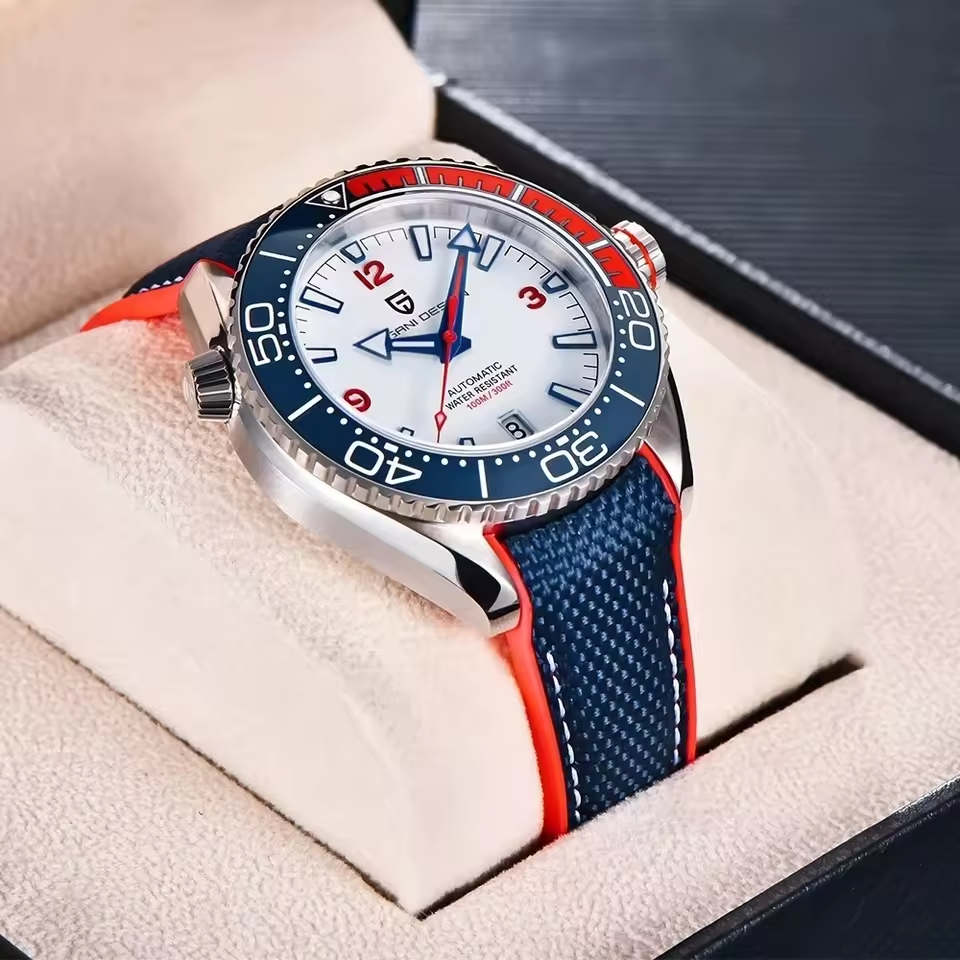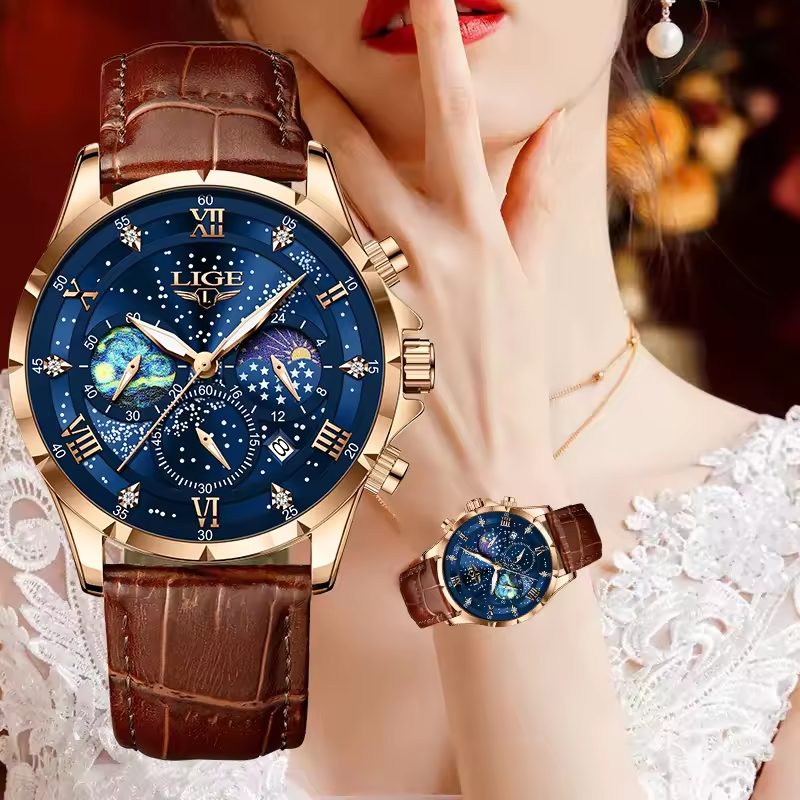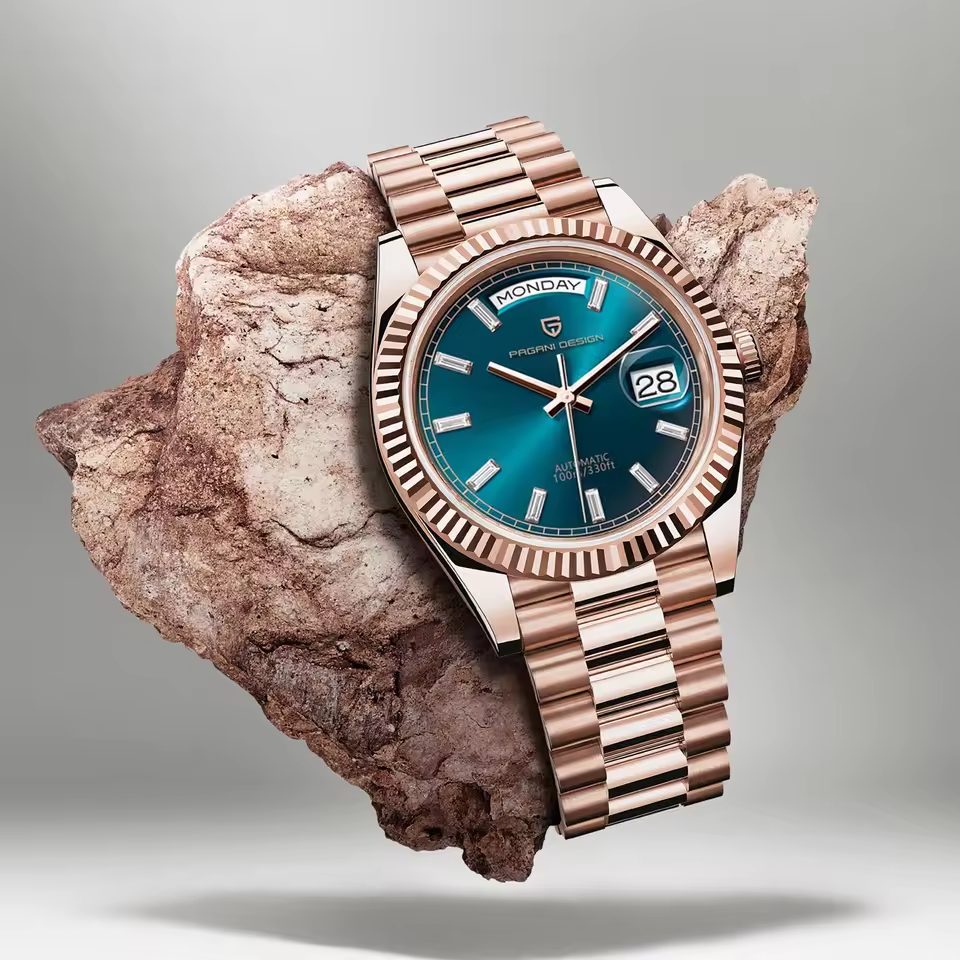Part 1: The Utility of Wristwatches
Wristwatches have come a long way from being merely time-telling devices to becoming essential tools with various functionalities.
1. Historical Significance:
Soldiers during the Napoleonic Wars in the early 19th century began wearing pocket watches on their wrists for convenience and practicality, marking the origins of the wristwatch. These early wristwatches were primarily used for military purposes, enabling soldiers to synchronize attacks and keep track of time without the need to fumble for a pocket watch.
As the 20th century progressed, wristwatches gained popularity among civilians. Their practicality and convenience made them a desirable accessory for people of all walks of life. The wristwatch’s ability to provide accurate timekeeping and essential information quickly solidified its place as a must-have item.
2. Advancements in Technology:
Over time, wristwatches have evolved from simple timekeeping devices to sophisticated tools with a wide range of features. The development of chronographs, which measure elapsed time, added to the functionality of wristwatches and made them popular among athletes and enthusiasts.
Calendars were another significant advancement, allowing users to keep track of dates, days of the week, and even the phases of the moon. Water resistance was another important feature that made wristwatches suitable for various activities, including swimming and diving.
These technological advancements transformed wristwatches into versatile tools for specific purposes. For example, pilots equipped aviation watches with rotating bezels and luminous dials to assist with navigation and timekeeping in low-light conditions. Divers designed dive watches to withstand the pressure of deep water and often included helium escape valves to prevent gas buildup during decompression.

Part 2: The Shift to Fashion Accessories
Wristwatches have morphed into stylish accessories, becoming a reflection of one’s personality and status.
1. Style and Design:
The wristwatch has transformed from a purely functional timekeeping device into a coveted fashion accessory. As luxury brands and fashion designers entered the watch industry, wristwatches became synonymous with elegance, sophistication, and personal style. Intricate designs, high-quality materials, and meticulous craftsmanship have elevated the wristwatch to a status symbol. From classic and timeless designs to bold and contemporary styles, there is a wide range of options to suit every individual’s taste and personality. Wristwatches now complement everything from casual attire to formal wear, becoming an integral part of a complete outfit. People use them to express personal style, make a statement, or simply enhance their overall appearance.
2. Status Symbol:
Luxury wristwatches have long symbolized affluence and social status. People covet certain brands and models, seeing them as signs of success, wealth, and discerning taste. Owning a luxury watch can confer prestige and social standing. It can be a conversation starter, a way to connect with like-minded individuals, and a symbol of one’s achievements. For many people, a luxury watch is more than just a timekeeping device; it is a statement of identity and a reflection of their personal aspirations.
While the value and prestige associated with luxury watches can vary, they remain a powerful symbol of status and success in many cultures. Whether it’s a classic Rolex, a sophisticated Patek Philippe, or a cutting-edge Audemars Piguet, luxury wristwatches continue to captivate and inspire people around the world.

Part 3: Technological Advancements in Modern Wristwatches
Modern wristwatches have integrated the latest technologies to offer a wide array of features and functionalities, beyond just timekeeping.
1. Smartwatches:
The advent of smartwatches has significantly reshaped the wristwatch industry, offering a range of features that go far beyond traditional timekeeping. These devices integrate cutting-edge technology to provide users with a host of functionalities, including fitness tracking, notifications, GPS navigation, and even mobile payments.
Fitness enthusiasts can use smartwatches to monitor their heart rate, steps, calories burned, and sleep patterns. By tracking these metrics, users can gain valuable insights into their health and fitness levels. Smartwatches can also receive notifications from smartphones, allowing users to stay connected and informed without having to constantly check their phones.

GPS-enabled smartwatches are particularly useful for outdoor activities and navigation. They can track your location, provide directions, and even record your route. Additionally, some smartwatches offer mobile payment functionality, allowing users to make purchases with a simple tap of their wrist.
The integration of technology has transformed the wristwatch from a simple accessory into a multifunctional device that can enhance various aspects of daily life. Smartwatches have become popular among individuals who value convenience, connectivity, and health tracking.
2. Hybrid Watches:
Recognizing the appeal of both traditional and smartwatches, many manufacturers have introduced hybrid watches. These watches combine the classic aesthetics of traditional timepieces with the modern functionalities of smartwatches.
Hybrid watches often feature a traditional watch face and case design, while incorporating elements of smartwatch technology. This allows users to enjoy the timeless elegance of a classic watch while benefiting from features such as activity tracking, notifications, and even limited smartphone connectivity.
Hybrid watches offer a balance between style and functionality, making them a popular choice for individuals who appreciate the craftsmanship of traditional watches but also desire the added features of modern technology. They provide a seamless blend of the old and new, catering to a wide range of preferences and needs.
Part 4: Sustainability and Ethical Practices
The watch industry has begun to focus on sustainability and ethical practices, emphasizing the importance of ethical sourcing and environmental impact.

1. Ethical Sourcing:
The watch industry has increasingly recognized the importance of ethical sourcing and fair labor practices. Many watch brands are now actively working to ensure that the materials used in their products are sourced responsibly and that their supply chains adhere to ethical standards.
Ethical sourcing involves ensuring that materials are obtained from suppliers who comply with labor laws, environmental regulations, and human rights standards. This includes avoiding the use of conflict minerals, child labor, and forced labor. By prioritizing ethical sourcing, watch brands can contribute to a more just and equitable global supply chain.
2. Environmental Impact:
The production of wristwatches can have a significant impact on the environment. However, many watch brands are taking steps to reduce their environmental footprint and promote sustainability.
Some brands are using sustainable materials, such as recycled metals or organic leather, to minimize their reliance on new raw materials. Additionally, efforts are being made to reduce waste and energy consumption throughout the manufacturing process. This includes implementing recycling programs, optimizing production processes, and using renewable energy sources. Furthermore, some watch brands are supporting eco-friendly initiatives and organizations. This can include partnerships with environmental charities, participation in conservation efforts, or the development of sustainable product lines.

Part 5: Customization and Personalization
Wristwatch brands are offering customization and personalization options, allowing consumers to create unique timepieces that reflect their individuality.
1. Customization:
The watch industry has increasingly embraced customization, offering consumers the opportunity to create personalized timepieces that reflect their unique style and preferences. Many watchmakers now provide customization options, allowing customers to select different components such as dials, straps, and bezels.
This level of customization allows individuals to create a truly one-of-a-kind watch that is tailored to their specific tastes and needs. Whether you prefer a classic design with a modern twist or a bold and unconventional look, customization options enable you to express your individuality through your timepiece. Customization can also be a way to add a personal touch to a gift or commemorate a special occasion. By creating a personalized watch, you can give a truly meaningful and unique present that will be cherished for years to come.
2. Limited Editions and Bespoke Services:
Luxury watch brands often offer limited edition models, which are produced in small quantities and are highly sought after by collectors and enthusiasts. These limited editions may feature unique designs, materials, or complications, making them highly desirable and valuable.
For those who desire an even more exclusive timepiece, bespoke services are available. Bespoke watches are custom-made to the exact specifications of the customer, allowing for a truly personalized and unique creation. Individual preferences can be reflected in every aspect of a bespoke watch, from the dial color and case material to the movement and complications. Limited editions and bespoke services provide an unmatched level of exclusivity and personalization within the watch industry. These options cater to individuals who appreciate the craftsmanship, rarity, and prestige associated with luxury timepieces.
Part 6: The Future of Wristwatches
The future of wristwatches holds potential for further innovations, sustainability, and personalization.
1. Integration of advanced technology:
Wristwatches are likely to integrate more advanced technology, such as enhanced connectivity, health monitoring features, and augmented reality, to offer even more functionalities to consumers.
2. Sustainable practices:
The focus on sustainability is expected to grow, with more watch brands adopting ethical and eco-friendly practices, pushing for greater transparency in their sourcing and production methods. This will further appeal to conscientious consumers looking for sustainable and ethical products.




